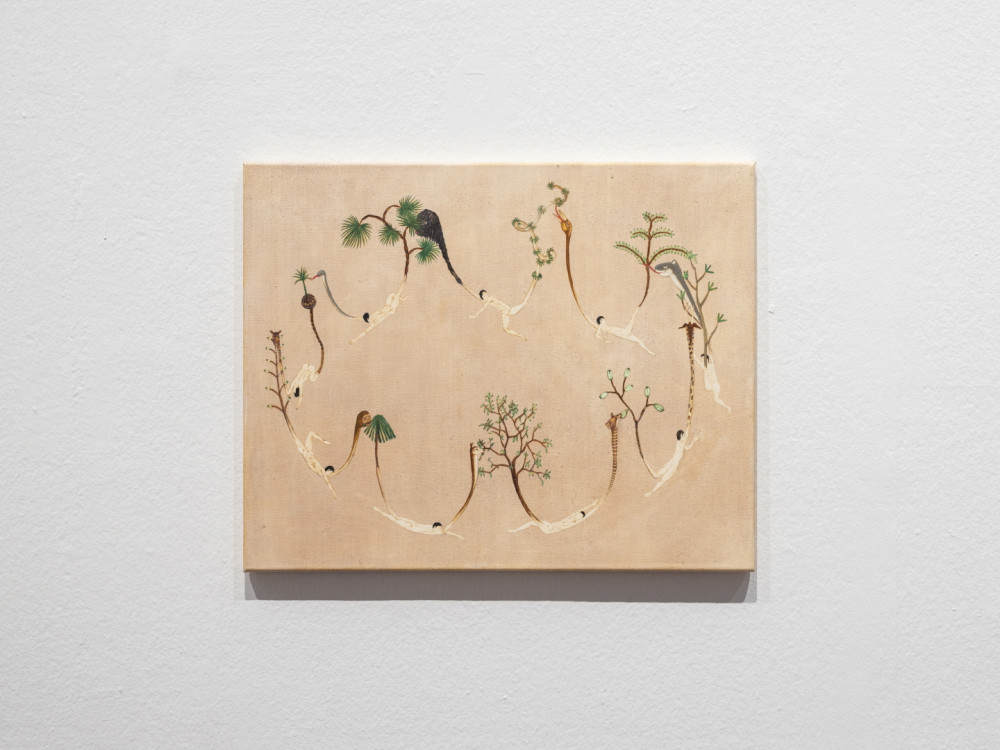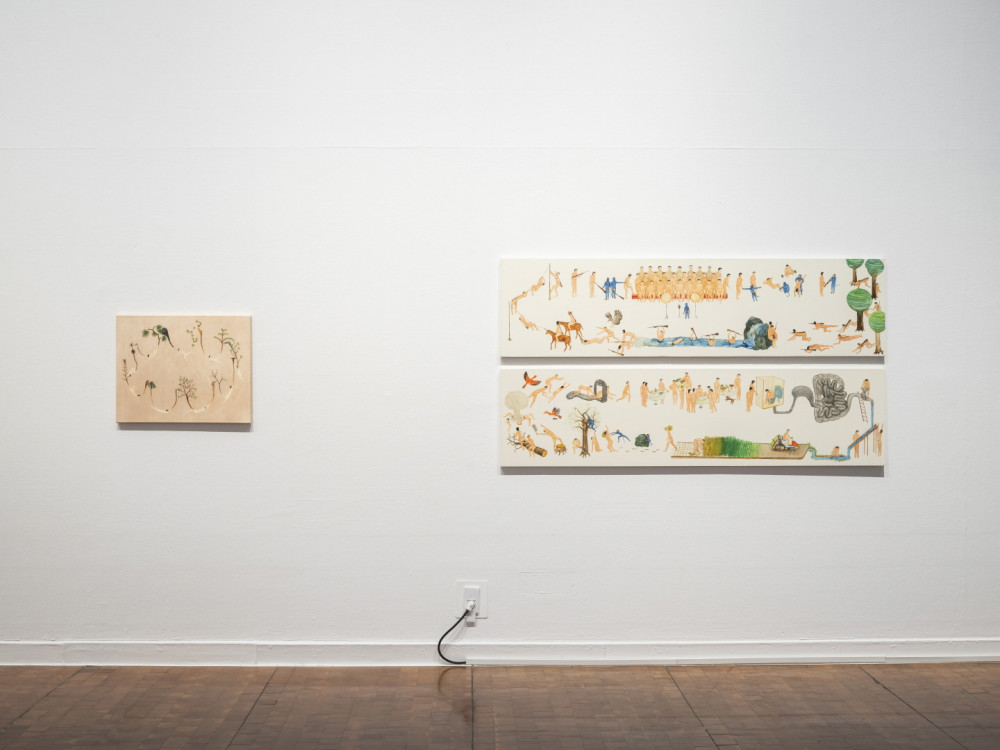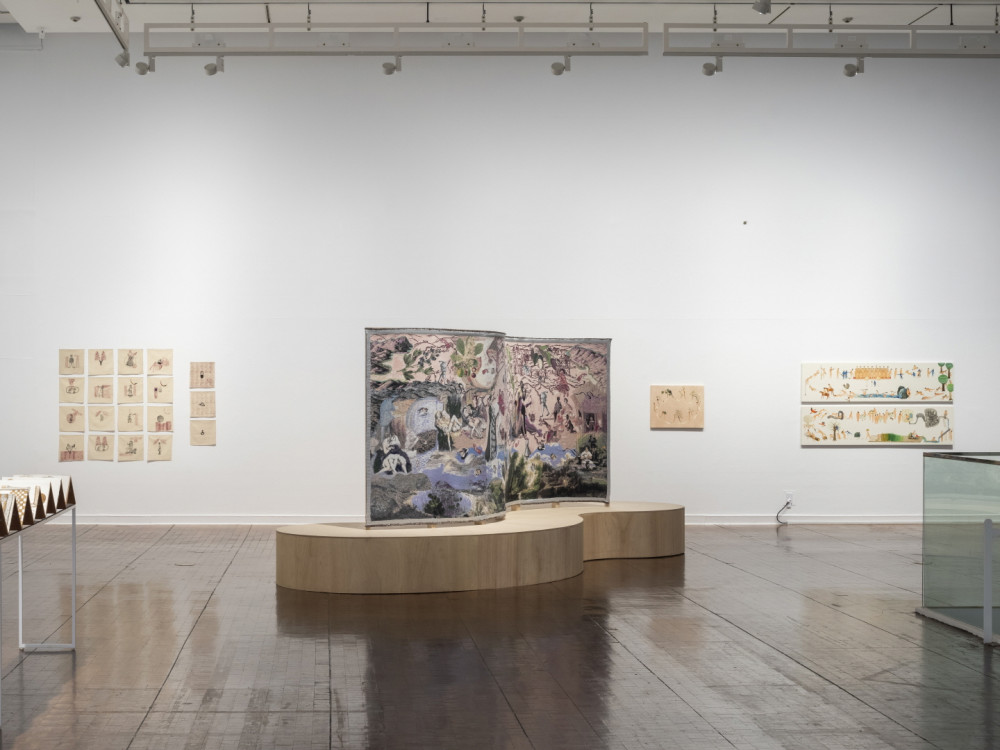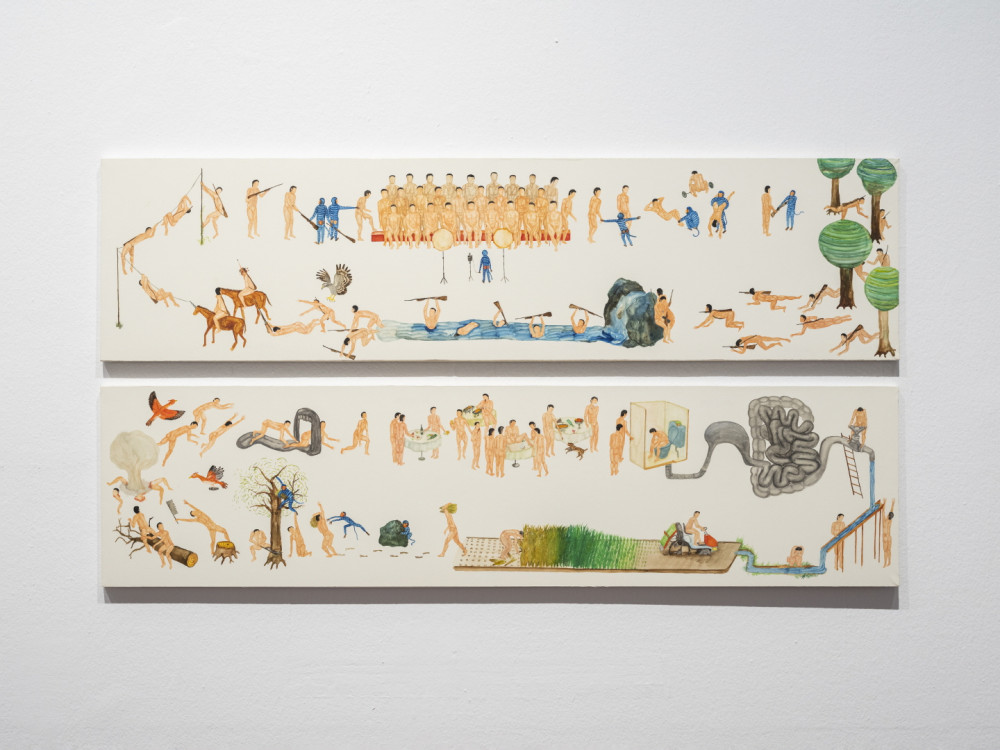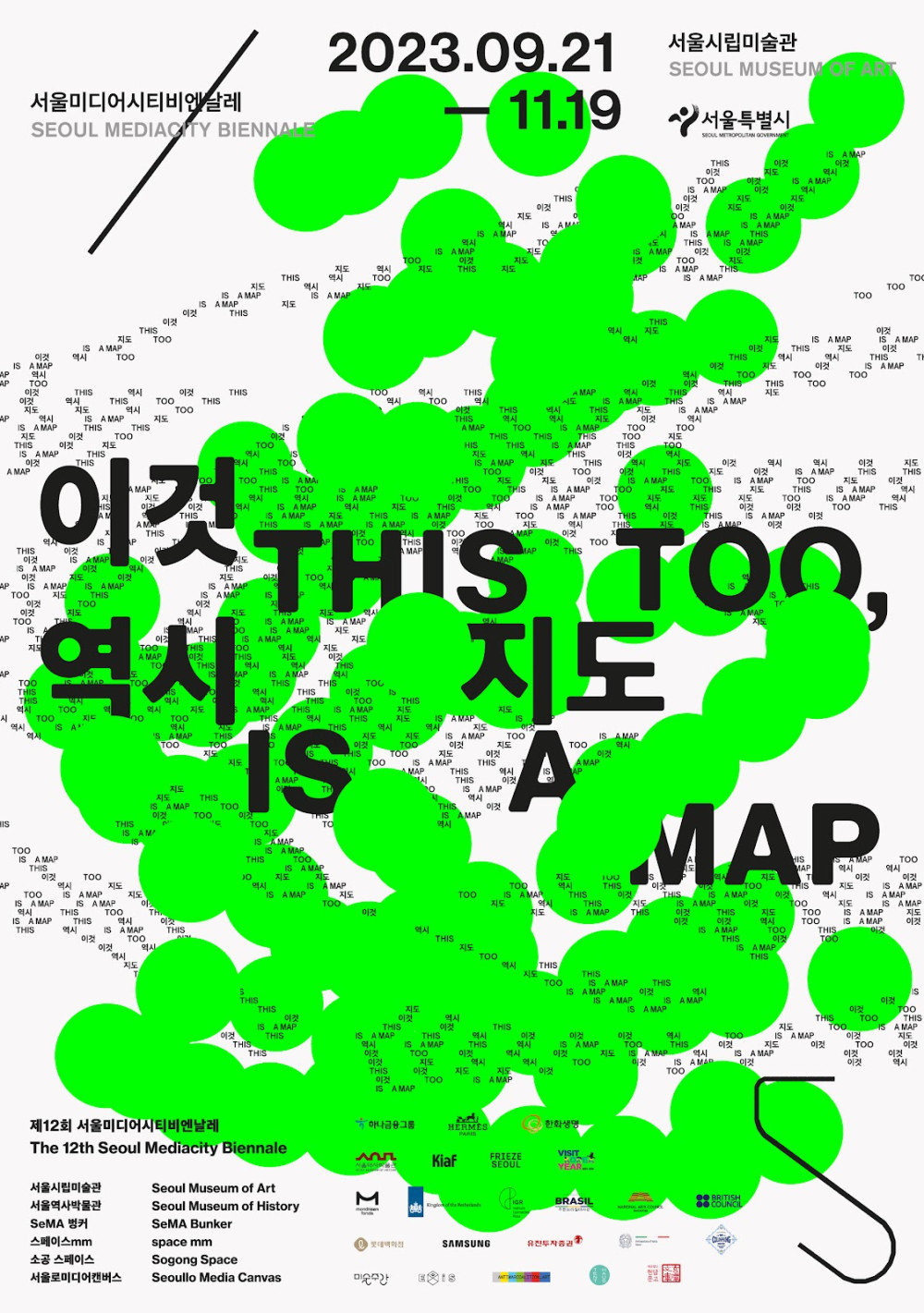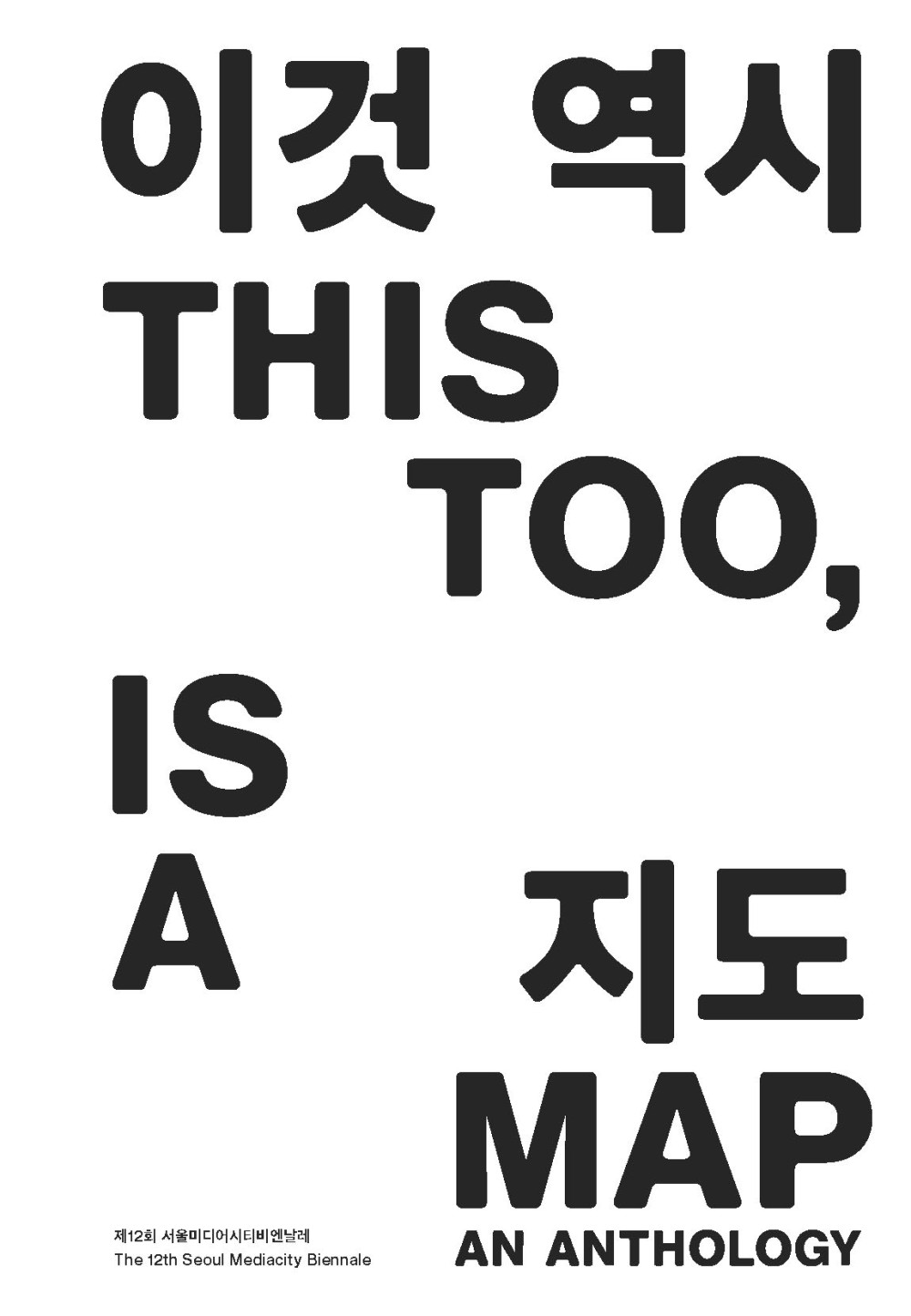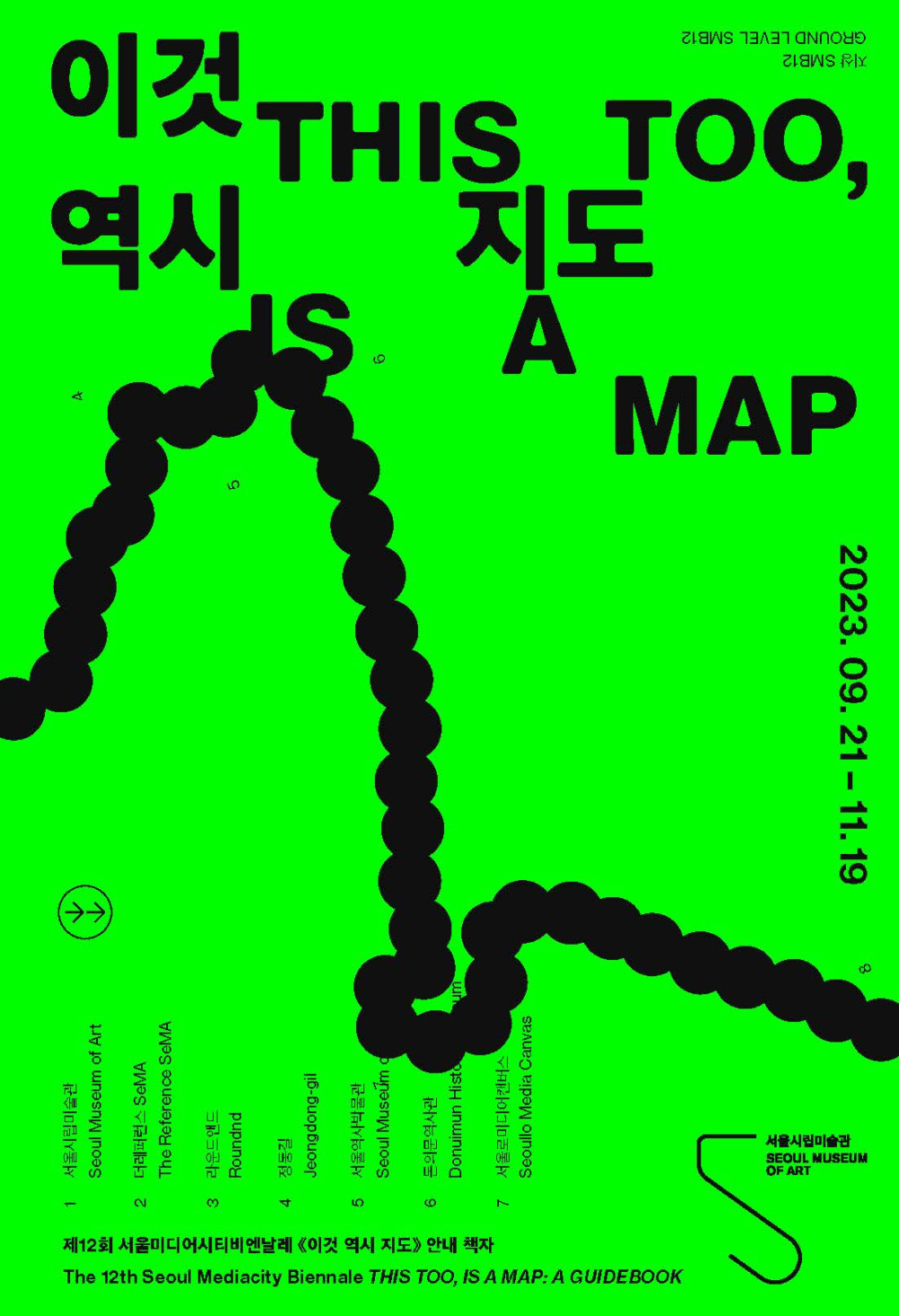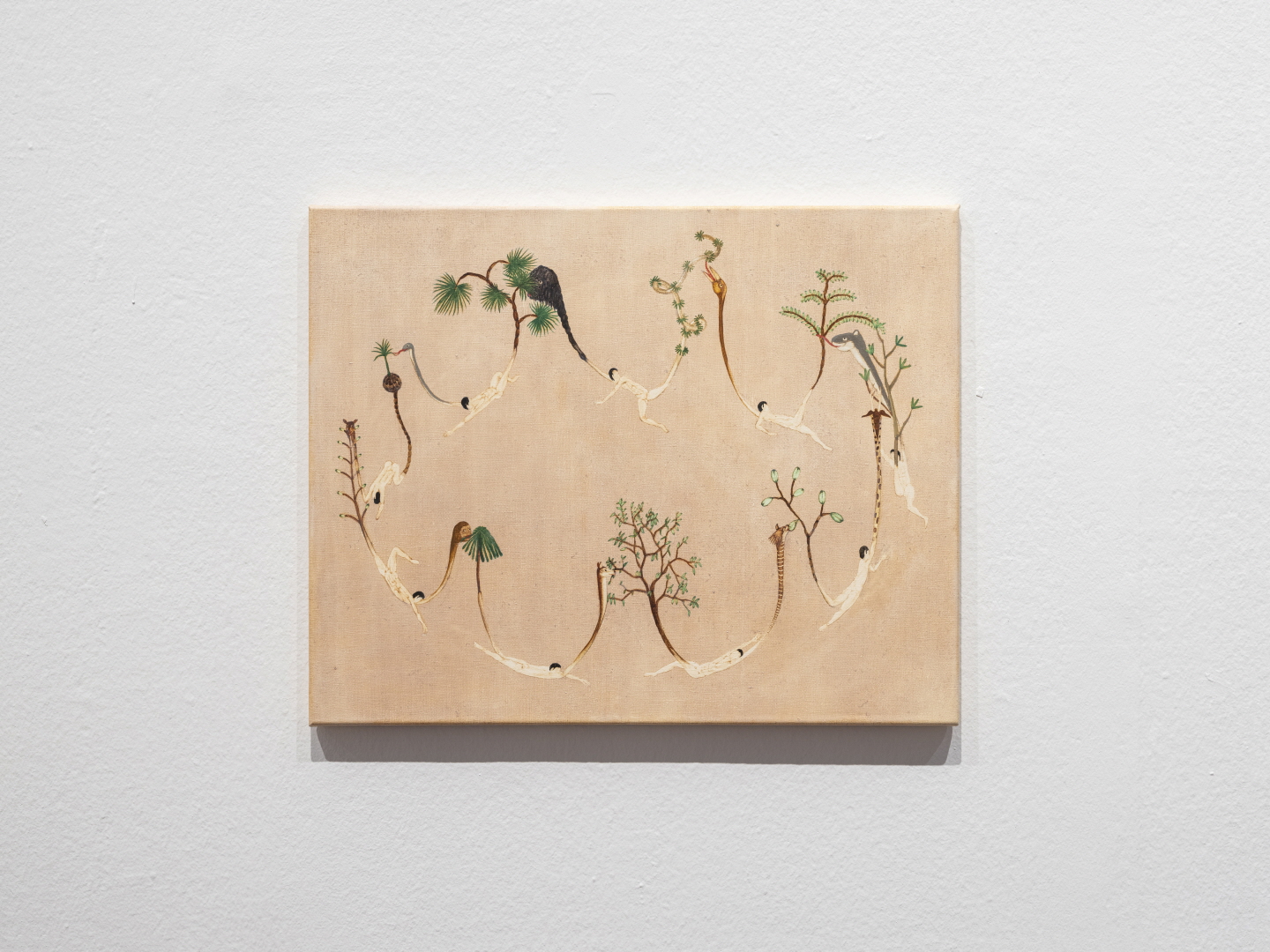
The drawings and paintings by New Yorkbased Japanese artist Akira Ikezoe depict metaphysical environments that blur distinctions between the human and the nonhuman, giving rise to surreal landscapes and figures. He produces images that invoke sources of ancestral knowledge as well as futuristic technologies of Japan, while revealing the precarious balance in which ecosystems and humans coexist. The three paintings he presents at SMB12 were produced in 2010, the same year that Ikezoe emigrated to New York, and are marked by a sense of national displacement. They operate in response to his understanding of the body as a metaphorical site of encounter between nature and culture, as well as notions regarding borders (material and otherwise) that separate inside and outside—the body, the house, the nation. In his paintings, delineations of human and nonhuman grow hazy, thereby destabilizing the binaries and categories through which Western culture perceives the world. Ikezoe’s works thus manifest the interconnectedness of interior and exterior, of individual bodies to one another, and of nature, reimagining the ways in which contemporary people experience and visualize the world.
